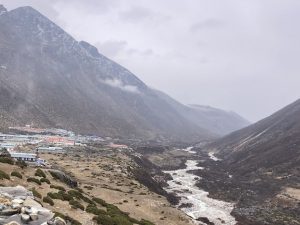
Reclaiming the narrative in African philanthropy is not just about changing perceptions; it is about shifting power and fostering a more inclusive and equitable approach to development. Credit: Shutterstock
By Tafadzwa Munyaka
NEW YORK, May 28 2024 – In recent years, the African philanthropy landscape has been undergoing a profound transformation. Or has it? Historically, the narrative of aid and development in Africa has been dominated by external donors and International Non-governmental Organisations (NGOs).
The role of African giving has largely been silent. However, a new paradigm is emerging—one where community-based organizations (CBOs) are reclaiming the narrative and driving change from within.
Drawing on years of traditional giving, it is time we dispel the notions of African philanthropy as having been constrained or colonized. This shift is not only reshaping how philanthropy is and has been practiced in many communities on the continent but also redefining the very concept of development.
Of grassroots initiatives, families, and the community
It is time we dispel the notions of African philanthropy as having been constrained or colonized. This shift is not only reshaping how philanthropy is and has been practiced in many communities on the continent but also redefining the very concept of development
At the heart of African philanthropy is grassroots initiatives, families, and the broader community. The people leading this transformation are the same agents that have pioneered giving throughout time, not only in emergencies.
The common feature of these agents is that they are deeply embedded within communities and possess an intimate understanding of the local context, needs, and aspirations. For instance, extended families will chip in to send children to school or ensure a relative has access to healthcare.
For example, in Zimbabwe historically in times of uncertainty, the village head or chief kept grain given to them in trust by the community for rainy days known as isiphala senkosi in IsiNdebele or dura rashe in ChiShona which means the chief’s granary. Unlike external entities, these agents are not merely visitors; they are stakeholders with a vested interest in the well-being and prosperity of their communities as illustrated.
In the case of CBOs, I can point out that they are uniquely positioned to address issues in a way that is culturally sensitive and sustainable. They can mobilise local resources, engage community members, and implement solutions that are tailored to the specific challenges and opportunities of their environments.
This localised approach ensures that interventions are relevant and have a lasting impact. In this way, they tend to do away with elaborate explanations of how the resources are going to be used because everyone is in on it and knows. This is not to say there is no accountability.
Rather, no stringent conditions or agendas are attached to the aid which ends up drawing superficial impact since much of it is bogged down in bureaucracy.
The narrative of aid
The traditional narrative of African philanthropy has often portrayed the continent as a passive recipient of aid. In this instance, aid is viewed in monetary terms or whatever can be quantified, usually in dollar terms.
This perspective not only undermines the agency of African communities but also perpetuates a dependency syndrome.
For the Global North, philanthropy means one has acquired a new status of wealth and suddenly has extra to give which is in contrast to African giving that is embedded in the need to help or contribute towards a solution despite one’s wealth status.
However, CBOs, families, and communities have continuously challenged this narrative by showcasing the resilience, ingenuity, and resourcefulness of African communities through everyday giving. The Covid-19 pandemic provides a clear example of this as “calls for a paradigm shift in the philanthropic sector gained momentum” in the Global North.
By taking the lead in development initiatives, CBOs have long demonstrated that African communities are not helpless but are, in fact, capable of driving their own progress, ceteris paribus.
This shift is crucial in changing the perception of Africa from a continent in need to a continent of opportunity. It highlights the importance of partnership and collaboration, where external support complements rather than dictates local efforts.
It should be noted, these partnerships should not be “entrenched in unequal power relations” denoted by directing every minute detail of who benefits, what should be done, and where, inter alia, defeating the purpose of sustainable philanthropy.
Of storytelling
A critical component of reclaiming the narrative in African philanthropy is storytelling. CBOs are increasingly using storytelling as a tool to highlight their successes, share their challenges, and amplify the voices of the communities they serve.
These stories are powerful because they provide a firsthand account of the impact of community-led initiatives and offer a more nuanced and accurate portrayal of African development.
These stories are told by people at the center of whatever challenges, opportunities, or development they are undergoing not because they have to fulfill and comply with grant agreements but expressing their lived realities and experiences.
Through storytelling, CBOs can humanise their work, making it relatable and compelling to a broader audience. So many children and people have accessed healthcare, education, evaded poverty and gone on to provide the same opportunities to others within their communities or villages and these stories are known.
These stories and realities could only be possible because there were people who gave towards these causes – ensuring the adage it takes a village to raise a child, for example, all true to the dot! It also helps to build a sense of pride and ownership among community members, reinforcing the idea that they are the architects of their own future.
Local private sector giving
An essential yet often overlooked player in the evolving landscape of African philanthropy is the local private sector. Businesses and entrepreneurs across the continent are increasingly recognizing their role in fostering social and economic development.
Through corporate social responsibility (CSR) initiatives, direct investments in community projects, and strategic partnerships with community-based organizations, the African private sector is contributing significantly to philanthropic efforts.
These businesses bring not only financial resources but also expertise, innovation, and a results-oriented approach to development initiatives. By leveraging their networks and influence, local companies are helping to scale impactful projects, support sustainable local enterprises, and create job opportunities, thereby strengthening the economic foundation of communities.
This engagement from the local private sector not only supplements traditional philanthropic efforts but also ensures that development initiatives are deeply rooted in the local economic context, enhancing their sustainability and effectiveness.
Challenges and opportunities
While the shift towards community-driven philanthropy is promising, it is not without challenges. CBOs often operate with limited resources and face structural barriers that can impede their effectiveness.
Additionally, the existing funding models are still largely skewed towards international organisations, making it difficult for CBOs to access the necessary financial support as local funding is negligible.
However, these challenges also present opportunities. There is a growing recognition among donors and development partners of the value of supporting grassroots initiatives. By investing in capacity building and providing flexible funding, donors can help to strengthen the infrastructure of CBOs, enabling them to scale their impact.
Bringing it home
Reclaiming the narrative in African philanthropy is not just about changing perceptions; it is about shifting power and fostering a more inclusive and equitable approach to development. Community-based organisations are at the forefront of this movement, demonstrating that sustainable change is best achieved when it is driven from within.
As we look to the future, it is essential to continue supporting and empowering CBOs, recognising their vital role in shaping the destiny of their communities. By doing so, we can build a new narrative of African philanthropy—one that celebrates the strength, resilience, and potential of African communities as it should be.
Tafadzwa Munyaka is a nonprofit/social change professional with crosscutting expertise in fundraising, program management, and child rights advocacy.
